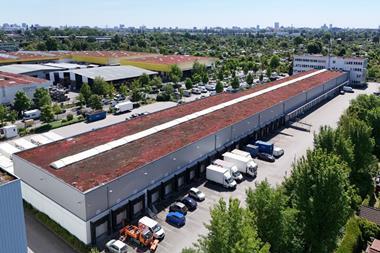Despite being a major player in global capital raising, the EMEA region for private real estate and infrastructure presents unique challenges for managers, writes Matt Hershey
EMEA has been an important region for private real estate and infrastructure capital raising, representing a quarter to a third of global annual commitments over the last decade, according to Preqin data. While important, it is challenging for managers to access.

For one, it is opaque with a variety of legal and tax jurisdictions, cultures, languages, and investment approaches. The euro as a common currency and EU harmonisation of regulations has helped. However, events like Brexit, oil price volatility, pension consolidation, and geo-political conflict have been a second layer of complexity to navigate.
A third challenge for capital raising may be less obvious – the EMEA investor landscape is changing rapidly. Understanding these tectonic shifts is critical for successfully navigating these markets.
Capital-raising agents are expected to play an increasingly active role, applying their experience and knowledge to facilitate the engagement of managers and investors.
From 2013 until 2017, real estate managers were consistently raising substantially more capital annually than infrastructure managers in EMEA.
This shifted in 2018 through 2020 with infrastructure and real estate roughly equal. The situation changed dramatically in 2021 and 2022 as capital raised for infrastructure exceeded real estate by 40% and 135%, a cumulative difference of $58.8bn (€54bn). Preliminary numbers for 2023 show significant declines in both, to roughly equal levels.

In 2024, real estate capital flows should recover with compelling EMEA-region investment opportunities in student accommodations, data centres, life sciences, UK residential, and logistics. More significantly, infrastructure investment should surge back with further investment in energy transition and digital strategies to expand its critical place in institutional portfolios.
Hodes Weill’s Real Estate Allocations Monitor shows EMEA investors fully invested at their 11.5% target allocation to real estate in 2023. After a decade of growth, that target allocation is expected to decline in 2024 by 20bps to 11.3%.
In contrast, Hodes Weill’s Infrastructure Allocations Monitor shows EMEA investors with a 3.6% actual allocation and a 4.5% target to the infrastructure asset class. Forty per cent of EMEA-based investors expect to increase their target allocation to infrastructure in the coming year, possibly increasing the spread. This spread will be a key driver of EMEA infrastructure capital flows in 2024.
Investment performance has supported the growth in infrastructure allocations. EMEA’s target returns for infrastructure and real estate are similar at 6.9% and 6.8%, respectively. In contrast, EMEA’s infrastructure 3-Year Actual Return was 11.8%, while real estate was 8.6%. Both outperformed but infrastructure delivered 490bps of excess return to real estate’s 180bps.
Through 2028, the annualised growth rate of AUM for European-focused real estate funds is forecast to be 2.7%, while AUM for European-focused infrastructure funds is projected to grow at 11.6% annually, according to Preqin. These growth differentials will significantly affect investors and their managers.
Investment product preferences of EMEA investors are strikingly different between infrastructure and real estate too. Of the region’s infrastructure investors, 90% are active in closed-end funds compared with 69% of real estate investors. The reverse is true for open-end funds with only 10% of infrastructure investors active, while 62% of real estate investors are active.
EMEA remains an important but challenging capital-raising market for private infrastructure and real estate investors and managers. Its rapid changes require longstanding and constant engagement to navigate successfully. As private real estate and infrastructure allocations grow in investors’ portfolios, the market will be well served by the additional liquidity that comes with it.


















